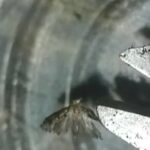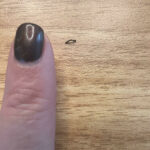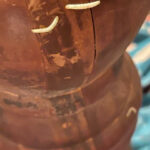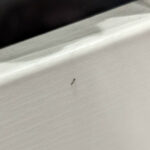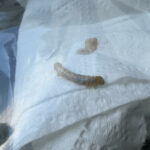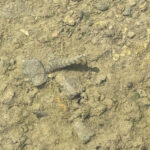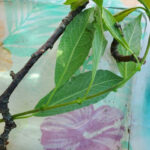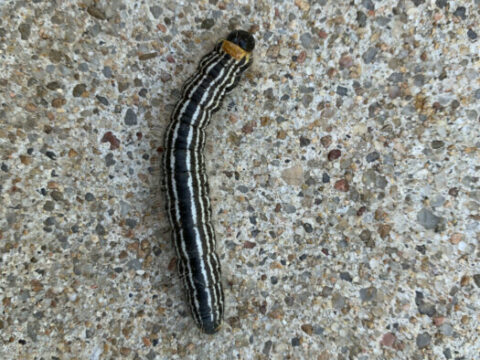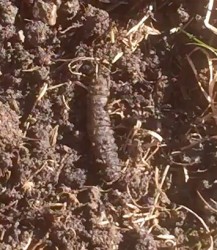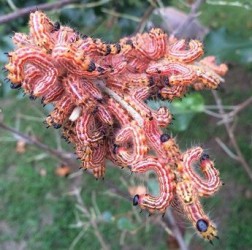
We received a question through the All About Worms Facebook page about red and orange caterpillars that a reader recently found on an apple tree. To call them “red and orange caterpillars” is at once insufficient and overreaching. It is insufficient because the creatures aren’t only red and orange; they have black heads and legs, and some orange parts of their bodies might just as easily be described as yellow. White hairs also cover their bodies, and they are striped lengthwise, from head to tail. We overreach, however, in claiming without explanation that these creatures are caterpillars. The reader identifies them as worms, so we must explain why we think they are instead caterpillars. This explanation is of course tied to the matter of identification, which is what the reader is wondering about, and to that topic we now turn.
First, here is one of the two excellent photos the reader submitted along with her question:

As indicated, we think these are caterpillars, and we are quite confident in this minimal fact. They are, like many caterpillars, brightly colored and richly patterned, and they also have six thoracic legs and a few pairs of prolegs. (It looks like four pairs, so eight prolegs in total. If they had more than five pairs, they would likely be sawfly larvae, which they pretty clearly aren’t for other reasons besides their number of prolegs.) They are also feeding on (or are at least on) a tree, which is precisely where one might find a grouping of caterpillars. So, we think our reader is finding caterpillars, and not any sort of worm, even though many caterpillars have names that involve the word “worm.” In fact, the reader mentions one – the “bagworm” – which is the larval form of a moth, and therefore a caterpillar.
The reader doesn’t think she found bagworms, and neither do we (because they don’t look like bagworms), but we think she is on the right track because she found something like a bagworm, namely, a moth larvae that feeds on a tree. (Bagworms are especially well-known because they are common pests for various tree species.) It is difficult, however, to offer too much greater of a level of specificity because of the vast number of different caterpillar species. Even if we posit that she found tree-eating moth larvae, this still leaves many thousands of possibilities. (To keep with the bagworm example, nearly 1,400 species have been described.) That said, we can offer some speculation, and our best suggestion is that she found some type of tent caterpillar – so-called because of the silk “tents” (webbing) they build in trees – which are the larval form of the moths in the genus Malacosoma. Probably the best known tent caterpillar (at least in North America) is the Eastern Tent Caterpillar, which build large tents in which several creatures live for the entire larval stage of development. The caterpillars pictured above have a similar body pattern to the Eastern Tent Caterpillar, but the ones our reader found are different colors, and obviously they aren’t in a large web. However, some species build only small webs that are abandoned, so they can be seen outside of their “tent,” and they are also often seen grouped together on tree branches. For these reasons, we think our reader found a species of tent caterpillar, but we can’t be sure of the exact species.
For that matter, we can’t be sure that she found tent caterpillars. This hypothesis has grounding, but it is still speculation; identifying caterpillars is a task hostile to certainty. However, we think we have pointed our reader in the right direction, and perhaps that is all she is looking for.
All About Worms is always free, always reader-supported. Your tips via CashApp, Venmo, or Paypal are appreciated! Receipts will come from ISIPP Publishing.
You might also find these guys interesting!




